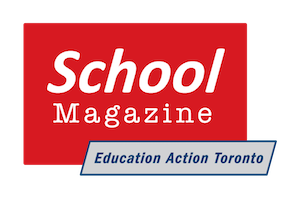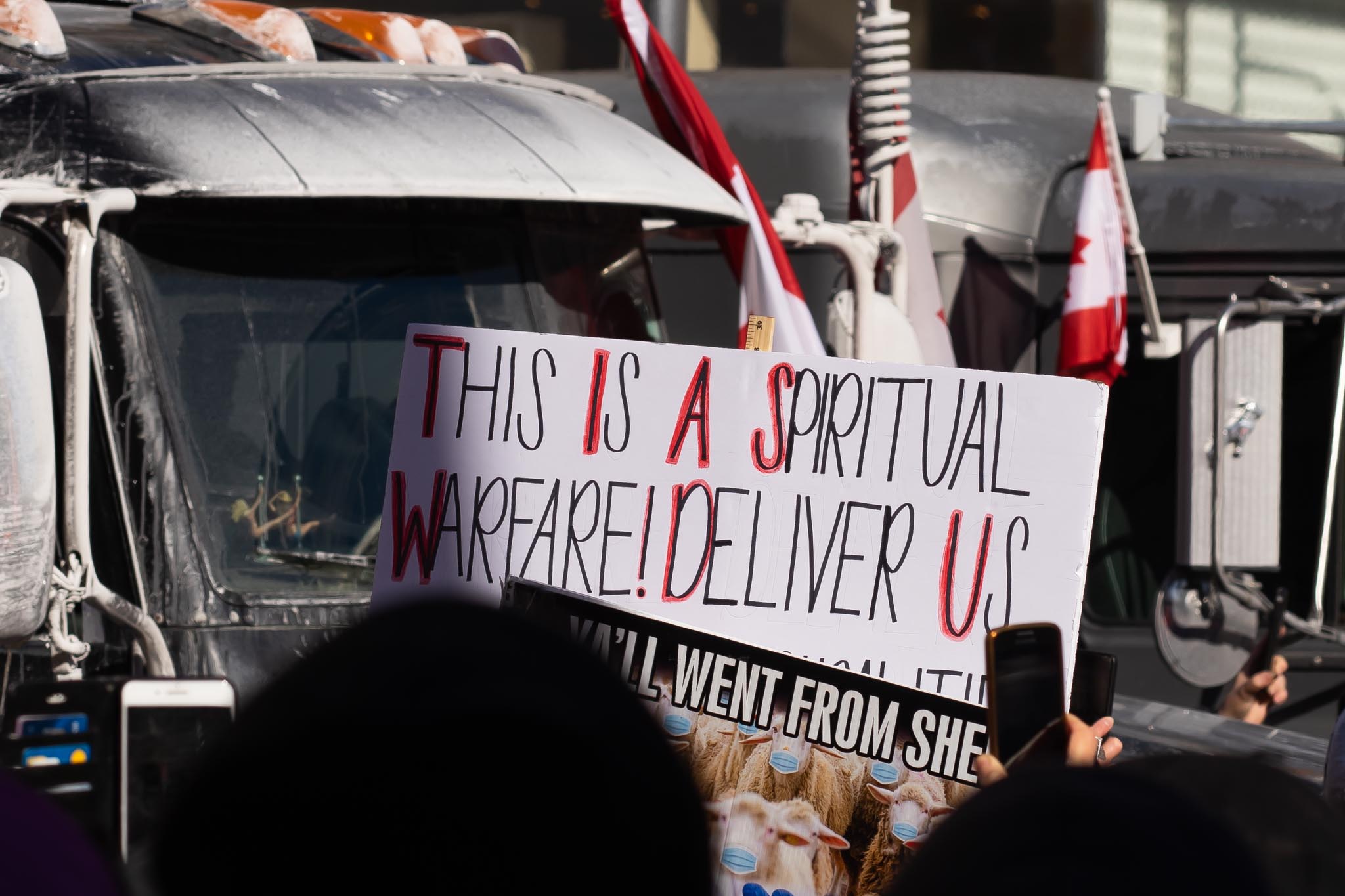Lessons on critical thinking: kicking the tires of the “freedom” convoy
A version of this article appeared in the Summer/Fall 2022 edition of Our Schools/Our Selves
One of my favourite teachers, was Keith Kenmare who taught grade 7 and 8 and was principal of Laura Secord PS in the heart of downtown Queenston, ON (pop. @220). This was the mid-sixties- the height of the Cold War, the escalation of the Vietnam War and the Civil Rights movement in the U.S. Mr. Kenmare had a caustic sense of humour, introduced good books- especially science fiction- and liked to spark arguments about “current events” as we called the bewildering mess of information that appeared on our TV sets.
That we didn’t know anything about the real history of Black or Indigenous people, women, war, civil rights or pretty much anything else, didn’t stop us barging into each other with reasoned arguments like “You’re an idiot!” or something we’d heard around the supper table. But what stays in my mind, after nearly 60 years, is Mr. Kenmare holding us to account. He was good at asking awkward questions like: “Where did you get that information?” “How do you know?” or “How would you like it if someone told you to get out of their store because of your colour?” And most of all, the comment: “Support your ideas.”
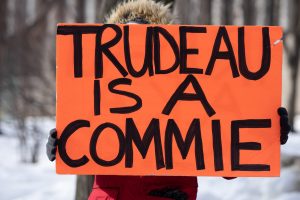 Nothing in education is more relevant today. Let’s face it, we don’t inhabit a world of polite, well-considered discussion over topics of interest in which debaters make insightful remarks about the failings of the other’s arguments. For the most part, public discourse is more like sticking your head in a hyperbolic wasps’ nest.
Nothing in education is more relevant today. Let’s face it, we don’t inhabit a world of polite, well-considered discussion over topics of interest in which debaters make insightful remarks about the failings of the other’s arguments. For the most part, public discourse is more like sticking your head in a hyperbolic wasps’ nest.
As I read about the so-called Freedom Convoy that took over downtown Ottawa for three weeks last winter, the nest was buzzing hard: basic rights trampled under the guise of public safety! Jordan Peterson fumed “how rapidly we stampeded to imitate a totalitarian state” in our response to COVID-19. Politicians like Pierre Poilievre welcomed the convoy to Ottawa from an overpass. Erin O’Toole dithered and lost his job. Ottawa police chief, Peter Sloly, quit. The mayor of Ottawa, Jim Watson declared a state of emergency.
The freedom the convoyers demanded seemed disarmingly simple: no masks, no vaccine mandates. But the real story was a lot darker: the “fuck Trudeau” and Confederate flags, the Swastikas, badgering people in Ottawa trying to go about their business, the desecration of national monuments, the demand for a duly elected government to drop all health mandates or be removed, the three-week stand-off with Ottawa police – all to press a grievance!?
Now we’re about to enter the next round of this political theatre: blaming – also called the public inquiry into the mess resulting in the federal government invoking the Emergencies Act to halt the occupation of the capital city. Governments across the country shaken by convoyers and constituents who might agree with them, started to lift mandates, open up public spaces – this just a few weeks after the country had been hit with the most virulent Omicron variant of COVID. Convoyers were still at it at the end of April with the“Rolling Thunder” biker rally in Ottawa supposedly to reconsecrate the National War Memorial but, really, as a show of power. And just two days ago newly minted Alberta premier, Danielle Smith declared the unvaccinated “the most discriminated-against group” in her lifetime. It’s grotesque.
Kids must wonder what’s going on? Do the adults in the room have the slightest idea what they’re doing? Are the people supposed to be in charge, just making things up as they go? Why do people who don’t want to wear masks or get vaccinations have so much influence that governments do a screeching u-turn on rules? Whose news can you trust?
The Freedom Convoy and the ideas it transported are seriously troubling but they offer up a great learning opportunity to consider fundamental questions about the real meaning of freedom, civil disobedience, power, misrepresentation, language and so much more. The challenge for teachers in their role as civic educators, is helping their students understand these and other events mired as they are, in social media and punditry that pretends to be news.
Critical Eye
To even begin to understand the so-called “Freedom Convoy” it’s good to take a few steps back from the events and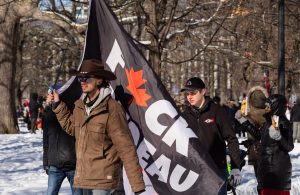 look at the information that informed them. Sarah Vance, a politics and history teacher in Toronto, spoke to me about preparing kids with a basic grasp of media literacy: distinguishing between high and low-quality journalism, who gets written about and how they’re portrayed. She suggested one of the most important books written on topic: “Manufacturing Consent: The Political Economy of the Mass Media” by Edward S Herman and Noam Chomsky1 which argues that mass media tells us what those in power want us to know in order to give consent to what they want to achieve.
look at the information that informed them. Sarah Vance, a politics and history teacher in Toronto, spoke to me about preparing kids with a basic grasp of media literacy: distinguishing between high and low-quality journalism, who gets written about and how they’re portrayed. She suggested one of the most important books written on topic: “Manufacturing Consent: The Political Economy of the Mass Media” by Edward S Herman and Noam Chomsky1 which argues that mass media tells us what those in power want us to know in order to give consent to what they want to achieve.
Critical journalism takes second place to the profit incentives of the corporations that operate media, the advertisers who pay for our attention and the institutions who guide and control access to the stories we read and decide who will be the common enemy. To get a taste of the argument here’s a nicely done 5-minute version Noam Chomsky – The 5 Filters of the Mass Media Machine.
Of course, all journalism isn’t suspect – it just needs to be seen realistically, in light of what influences it, particularly as independent news sources shut down or are swallowed by massive organizations. Armed with that basic understanding, teachers can guide their students in asking questions about reputation of sources, the type of reports, who is listened to, what interests the players have and the commercial value of hyperbole and outright lies. This is really useful knowledge.
Lateral Reading
Both Ms. Vance and her colleague, teacher Melanie Willson use lateral reading as a tool to help students get to know the source of the information they read. This comes from the work of the Stanford History Education Group (SHEG) studying how students, professors and news fact checkers each read information from internet pages. The study found that undergrads and professors tended to read a web site vertically as if it was printed text. They were influenced by its appearance – an official looking organization logo, nice layout or the official-looking “.org” at the end of the url. So, they were susceptible to being deceived by an appealing web page.
Fact checkers, on the other hand, already know that the web is dangerous information territory, so spent less time reading an article and more time researching its sources. They read laterally – searching elsewhere in the web for information about the site or organization behind it. Check this Convoy Facebook post from March 7, 2022 about one of the organizers:
“Tamara Lich, Canada’s political prisoner, released from jail- Justice Centre for Constitutional Freedoms” (JCCF). It links to a piece of the same title on the JCCF webpage. Rather than spending much time studying the content of the page a lateral reader would look for more information about the JCCF.
A quick look reveals some interesting entries, particularly a CTV Winnipeg News item from July2021 entitled: “A closer look at the Justice Centre for Constitutional Freedoms and where it gets its support” CTV did some digging to discover that JCCF took part in a legal challenge against gay-straight alliances in Alberta, that its assets amounted to over $1.7 million in 2020 and that it receives donations from two groups that fund conservative think-tanks. Other sources of revenue come from well-connected groups like the Hearn Foundation and the Aurea Foundation, started by the late billionaire, Peter Munk.
Its president, John Carpay, hired a private investigator to follow Court of Queen’s Bench Justice Glenn Joyal apparently to could catch him breaking any public health orders – JCCF represents people fighting COVID-19 related alleged infractions. A Press Progress article from July 19, 2021 noted that Mr. Carpay took an indefinite leave of absence after it was discovered that he’d hired the detective. Good to know the source of information.
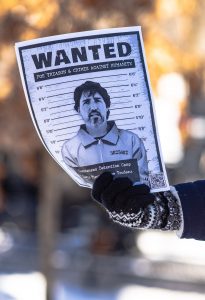 Teachers can also use fact-checking websites like Snopes with their students to help them negotiate the wildness that’s social media. Early in February, PM Justin Trudeau posted this comment on his Facebook page:
Teachers can also use fact-checking websites like Snopes with their students to help them negotiate the wildness that’s social media. Early in February, PM Justin Trudeau posted this comment on his Facebook page:
“I know this pandemic is frustrating. It’s frustrating that, after two years, we’re not done fighting COVID-19. But over the past few days, Canadians have been shocked – and, frankly, disgusted – by the behaviour displayed by some people protesting in our nation’s capital.
I want to be very clear: We’re not intimidated by those who hurl abuse at small business workers and steal food from the homeless. We won’t give in to those who fly racist flags. And we won’t cave to those who engage in vandalism, or dishonour the memory of our veterans.
There is no place in Canada for this behaviour. So, to those responsible: It needs to stop. And to those who joined the convoy but are uncomfortable with the symbols of hatred and division on display: Be courageous and speak out. Do not stand for, or with, intolerance and hate.”
Mr. Trudeau’s message, was doctored and circulated widely:
“Please help do your part to make this stop. If you have family or friends that still haven’t been vaccinated, do not allow these to family dinners, do not speak to them on the phone, do not reply to their texts. You need to do everything you can to make life difficult for them until they comply.”
A quick check in Snopes revealed the falsehood. The above message didn’t appear on Mr. Trudeau’s Facebook or Twitter feeds. It was cobbled together with his picture to make it look like the real thing. But it was fake news. Snopes also addressed rumours about the size of the convoy, miscaptioned videos showing global support for it, along with doctored clips from “The Simpsons” that made it appear that the show had predicted the convoy.
Checking Claims
Why do players in a story say what they say and how do they back it up? Here’s where teachers can draw from news specifically about the convoy. For instance, a February 14 CBC article reports Prime Minister Justin Trudeau claiming that the government brought in the Emergency Act because it was “forced to act” to bring the situation under control in Ottawa and elsewhere. It’s clearly in Mr. Trudeau’s political interests to justify using the Emergency Act for the first time since its inception in 1988. So, good classroom discussion questions are bound to include:
-
- How was the government “forced” to do this?
- If it’s true that it was forced, how did the situation get so out of control that this measure of last resort was chosen?
- How did several thousand people manage to bring about such a national stand-off?
- Whose interests are served by the claim “forced to act.”
The Canadian Civil Liberties Association (CCLA) raised such questions in its statement from February 15. Questions like these are bound to come in handy during the public inquiry.
What about the claims the convoyers made to back up their actions? There was a visually appealing site, Common Sense, that outlined “What the truckers want” in the middle of February. The piece is a lesson in misdirection: extol the courage and fortitude of the protesters, add a quotation from a man who emigrated from the Ukraine “…to be free – not slaves,” report on unfair treatment of those who refused or feared being vaccinated. Just don’t say much about truckers. The Canadian Trucking Alliance condemned the actions.
Teachers could use information from the site to ask questions like:
-
- Does this story have information that supports what Canadian truckers want?
- How are mandates the equivalent of slavery?
- Since the whole idea for the protest was to force governments to back down on mask and vax mandates, what arguments support the convoyers’ specific demands?
It’s a question that applies to statements from the Freedom Convoy organizers . In this letter posted February 17 on Facebook, they again make demands to end vaccine passports, masking requirements and “respect freedom of choice without discrimination” – the big opportunity for teachers is to help their kids examine that statement critically:
without discrimination” – the big opportunity for teachers is to help their kids examine that statement critically:
-
- Does the statement give any reasons beyond freedom for tossing out mandates?
- Is this freedom unconditional?
- What is the difference between individual and group freedoms?
- What about the consequences to those around you?
- What about community responsibility not to infect others?
- When is it right or wrong for governments to restrain freedoms- something they do every day?
The questions are so simple as to appear naïve, yet they go unanswered in anti-mandate statements.
And how does “freedom” come to be associated with anti-mask and anti-vaxxers, asks teacher Deborah Buchanan-Walford, a member of Ontario Education Workers United (OEWU). She has fought to get more representation of Black members at the Ontario Secondary School Teachers Federation (OSSTF) and there’s no way her group or any of the other Black, Indigenous, LGBTQ+, Muslim or other less privileged groups can expect even a tiny portion of the coverage and money the convoyers and their fellows attracted.
So, if you’re an English teacher and you want kids to consider the manipulation of language, it would help, just for a start, to initiate some discussion on the freedom claimed by the convoyers versus the freedom sought by Civil Rights workers in the U.S. or the anti-Apartheid movement in South Africa or the freedom sought by Indigenous people to simply live, to escape the horrors of residential schools – freedom from genocide.
What does this say about the sense of entitlement and power of those demanding no more mandates? Ms.Buchanan-Walford asks why media even use the term “freedom convoy” – another good question for teachers wanting to help students understand the connection between language and power.
What about other claims the convoyers make? I think this is one of the better uses of convoy events as a teaching tool: that question: “If what they say about freedom from mandates seems overblown, what else looks dodgy?” This is the heart of misinformation about the pandemic and students can learn a lot by challenging it.
In 2020, Vaccine Choice Canada and others represented by Toronto lawyer Rocco Galati sued the Prime Minister, Ontario Premier, Doug Ford, head of the Public Health Agency of Canada, Dr. Theresa Tam and others to get them to overturn mandate provisions like lockdowns, wearing masks and vaccinations. Mr.Galati told CBC news:
“We have the testimonies of 43 Canadian and international experts who maintain that these measures are not corroborated by any scientific fact, that they have not previously been the subject of any clinical trial which could have proven their effectiveness and that they are extreme in the circumstances.”
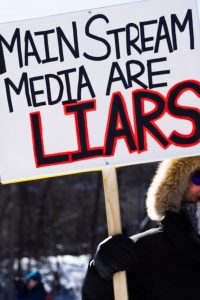 There is plenty for kids to check here: What 43 experts? What are their areas of expertise? Interestingly, Mr. Galati doesn’t even make passing reference to them or their backgrounds. What about “not corroborated by any scientific fact?” Kids can pop “research on use of masks and Covid 19” into their favourite browser to get plenty of hits. The first one I found, from the Centre for Disease Control (CDC)supports the use of face masks to reduce transmission. Mr. Galati appears to be using the time-honoured tactic of exaggeration to push his arguments. It’s so important for young people to grasp this as a tactic rather than elucidation when so much of what they read and hear is nonsense.
There is plenty for kids to check here: What 43 experts? What are their areas of expertise? Interestingly, Mr. Galati doesn’t even make passing reference to them or their backgrounds. What about “not corroborated by any scientific fact?” Kids can pop “research on use of masks and Covid 19” into their favourite browser to get plenty of hits. The first one I found, from the Centre for Disease Control (CDC)supports the use of face masks to reduce transmission. Mr. Galati appears to be using the time-honoured tactic of exaggeration to push his arguments. It’s so important for young people to grasp this as a tactic rather than elucidation when so much of what they read and hear is nonsense.
The CDC report adds that there are some adverse effects from wearing masks like, in some cases, difficulty breathing during intense exercise. So, there is another way in which this story helps to further education in healthy skepticism. It rests on false dichotomy, the notion that a situation is either all one condition or all another when really, it varies. 2 Mandates like masking are dichotomized as a necessity for everyone vs. no one; lockdowns as either total or non-existent. Indeed, lockdowns had serious negative affects across the country: economic, financial, educational, effects on mental health families and work – it goes on. But it’s false to say that the only recourse is to drop all mandates immediately.
The discussion and research for students here could be:
-
- Masks vs no masks- is it all one way or the other?
- What steps had to be taken for governments to start lifting restrictions?
- Did they always do the right thing?
- What should governments learn from the pandemic?
False dichotomy was the central justification of the convoyers’ actions; there were no headlines declaring: “Protestors demand a discussion about easing mandate restrictions.” It is really important for kids to understand limitation of options and thinking posed by false dichotomy and how misleading it is.
Context
Convoy organizers downplayed the swastikas and Confederate flags held up by protestors; they revealed too much. Organizer BJ Dichter said he welcomed “unacceptable opinions because I want to challenge them” as though flying symbols of genocide and slavery might spark useful debate. The obvious discussion question of course is: What’s to challenge? What were Nazi and Confederate supporters doing amongst a crowd touted as being full of joy and support for one another – and freedom?
In his excellent article for the Toronto Star, Justin Ling goes back a year before the pandemic to 2019 as leaders of the 2022 convoy were just getting started. The article describes convoy leader and former military intelligence officer Tom Quiggan at an event in Medicine Hat, describing a plot between Islamists and socialists to control Western governments. Another prominent convoyer, Tamara Lich, helped organize it. James Bauder, who did logistics for the convoy, in 2021 called for Justin Trudeau’s arrest for treason and committing crimes against humanity over his support for the World Economic Forum (WEF) which conspiracy theorists say helped to release COVID-19 to the world in order to bring about totalitarianism. Yet another convoy organizer, Pat King warned: “There’s an endgame. It’s called the depopulation of the Caucasian race.”
A bunch of protofascist cranks organized a convoy in which participants occupied the national capital for three weeks, stockpiled gasoline, threatened people wearing masks, urinated and defecated on the street, kept their truck horns going incessantly and wouldn’t leave. There didn’t appear to be anything the police or other authorities could do about it.
So, a good research question for kids is “What’s happened to other people not so politically embraced by Canadian society?” Compare and contrast treatment of the largely white convoyers with that of the 890 people – many of whom were Indigenous – protesting old-growth logging in Fairy Creek B.C. who were pepper-sprayed, tackled and arrested by the RCMP in 2021. Consider the arrests of Wet’suet’en people blocking the Coastal Gaslink pipeline project from crossing their lands. Look at how decisively Toronto police moved in to clear homeless people from downtown parks like Lamport stadium during the summer of 2021.
Check out the excessive force and detention 1 100 peaceful protestors, journalists and onlookers at the Toronto G20 summit in 2010. What made the convoyers so special? The point here for students, is that there is so much more to a story like this than good feelings about freedom and togetherness. We need to teach them to look behind simple, catchy phrases and unsupported claims.
What all of this boils down to is that a time of truly incredible information hurled at them, kids need help developing bullshit detectors. There was certainly enough of it piling up during the February convoy that a good pair of rubber boots and a shovel would have come in handy. On the other hand it provided a source of useful misinformation to enable students to practice healthy skepticism. Dig, practice lateral reading. Check facts. Debunk.

Here are some more sources, if you’d like to kick some more convoy tires to check out inflation levels:
Why does critical race theory make people so uncomfortable? – Patrina Duhaney, University of Calgary.
“The rise of the so-called “freedom convoy” that has infiltrated Canadian soil raises many questions of Canada’s implicitness in these discussions. Although disguised as opposition to government restrictions around COVID-19, the protests and blockades reflect white entitlement and the insidious effects of white supremacy.”
Can the Left Learn From Canada’s “Freedom Convoy”? – Natasha Leonard.
“The right, of course, doesn’t have some of the baked-in obstacles that the left faces — above all, the police, whose light touch so far has been key to the right-wing-led protesters’ ability to set up camp in front of the Canadian Parliament. Videos even show some cops offering words of support to the protesters. On more than one occasion, cops have cleared counter protesters out of the way of truck convoys joining the blockade”.
Was it really about vaccine mandates — or something darker? The inside story of the convoy protests –Justin Ling.
This article was cited above, but deserves special mention since it provides an important history of the convoy including the 2019 “United We Roll” event run by many of the same people who lead the 2022 convoy. It offers background information about the organizers as well as what they had to say about global conspiracy theories and the need to trigger a national vote – somehow- to remove the government.
The so-called Freedom Convoy was never about truckers, or border mandates – James Menzies.
“Truckers who participated in a cross-country convoy culminating in protest at Parliament Hill this weekend have been duped into believing the convoy was about them”
COVID-19 false dichotomies and a comprehensive review of the evidence regarding public health, COVID-19 symptomatology, SARS-CoV-2 transmission,mask wearing, and reinfection – Isaac Bogoch et al
“Misinformation and disinformation come in endless guises and spread via different mechanisms, including campaigns of persistent inaccurate beliefs and falsehoods, deceptive messages, and engagement echo chambers. The pandemic has brought a paper tsunami with widespread misinterpretation of both peer-reviewed research and preprints, press releases without scrutinizable data, sensationalized media reporting, and endless conspiracy theories.”
Notes:
- “Manufacturing Consent: The Political Economy of the Mass Media,” Edward S. Herman and Noam Chomsky, Pantheon Books, 1988
- “COVID-19 false dichotomies and a comprehensive review of the evidence regarding public health, COVID-19 symptomatology, SARS-CoV-2 transmission, mask wearing, and reinfection,” Isaac Bogoch et al, BMC Infectious Diseases, 2021
